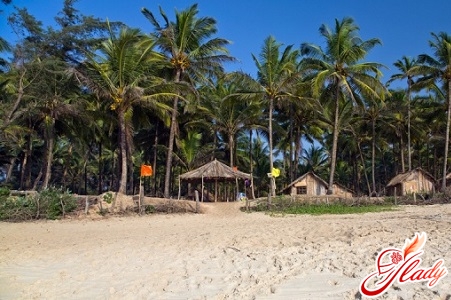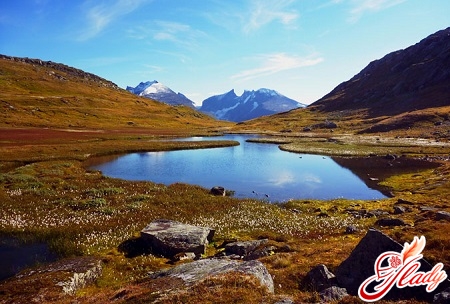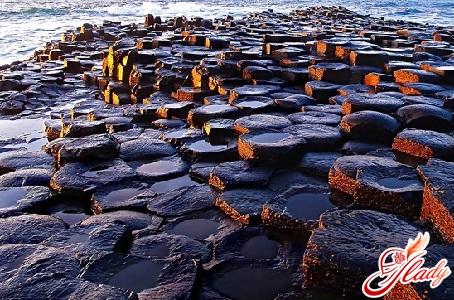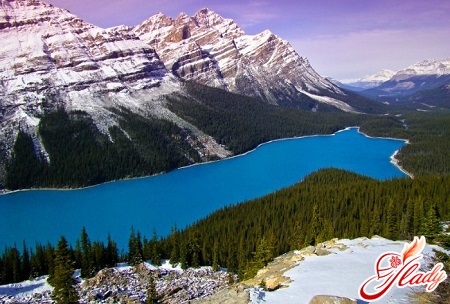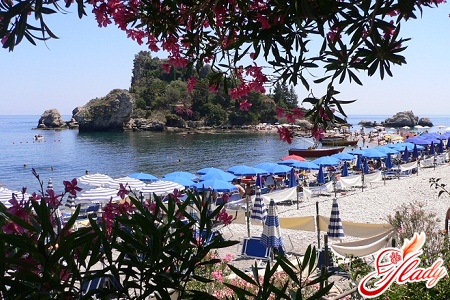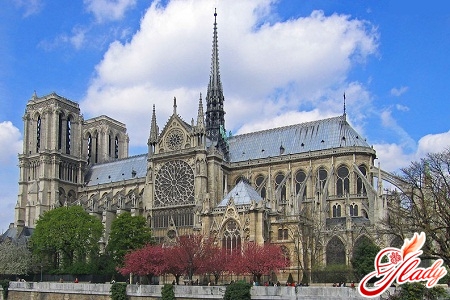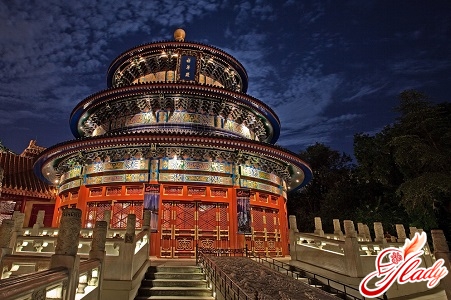
China is a country that surprisesits guests. Here, a mysterious history coexists with a vigorously developing modernity. Traditions accumulated over centuries are fascinating, and the products of the culture of our contemporaries are sometimes stunning. Many things here are “the most” - the largest, the most ancient, the most popular in the world. A kind of showcase of China can be called its central city Beijing, the name of which literally translates as “the northern capital”. The sights of Beijing reflect the essence of modern China in the best possible way. The very layout of Beijing, despite numerous destructions and devastations, which has preserved the shape of a rectangle strictly oriented to the cardinal points, arouses curiosity. The age of the settlements that became the basis for the city is more than 4 thousand years. Some sights built in the 10th century have survived to this day. And one of the youngest architectural works that attract tourists is the Olympic complex, built for the 2008 competitions.
Main square
The center and heart of Beijing can be called the squareHeavenly Peace - Tiananmen. It is rightfully considered the largest in the world in terms of area. It is here that all events significant for the state take place. And during national celebrations or political debates, it does not at all live up to its name. Every day, the square hosts a ceremonial raising and lowering of the national flag. The square is surrounded by significant objects for the city: the Hall of the Congress of People's Representatives of China, the Mausoleum of Mao Zedong, the National Museum of China. The latter is worth telling in more detail. After all, it is the largest and most visited museum in the world. It presents more than 600 thousand exhibits that can tell about the history of China, dating back 5 thousand years. Particularly famous is the Ding tripod - the largest bronze item of antiquity, 3 thousand years old. Its weight is 833 kg. Another bronze item - a square wine vessel with images of four sheep's heads, dating back to the Shang Dynasty. The museum's landmark, over 2,000 years old, is a burial suit made of jade, treated with gold braid. The time until significant events is counted down by a clock on the museum's facade.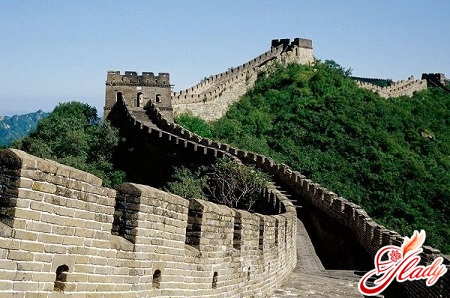
A long wall of 10000 li
When visiting Beijing, you can’t help but visit the GreatThe Great Wall of China. This is a grandiose structure, the construction of which lasted almost 2 thousand years. The wall was designed to protect the country from foreign enemies and to protect Chinese subjects from mixing with their neighbors. The size of this architectural landmark is staggering: its length with all its branches is 8850 km. The towers on it were built at a certain distance so that two neighboring ones could be seen from any of them. This is how a warning system was created, by which it was possible to very quickly transmit the approach of an enemy. Of course, most of the wall has not survived to this day in due condition. But some of its sections have been restored and are open to visitors. The best-preserved sections of the wall are located near the urban part of Beijing. About 60 km away is the most visited section - Badaling. Its length is 50 km, and it was built in 1505. The height of the wall is about 8 m, and the width is 10 m. 5.5 m. It is always very crowded here. Moreover, most of the visitors are Chinese themselves. For most of them, this is a kind of "sacred" duty. Badaling is located in Yanqing County. On its territory there are also caves in which people have lived since ancient times. You can get to the attraction by electric train from Beijing. At a short distance from Beijing are the Jingshanling and Simatai sections, as well as Mutianyu. The latter is interesting due to the presence of both restored and untouched parts of the wall. You will have to change trains to get to it. Maybe that is why it is not as popular as Badaling, but many visitors claim that Mtianyu is much more beautiful. But Simatai and Jinshanlin are good for those who want to fully immerse themselves in history. They are the farthest from the capital and have not been restored. There are few tourists here. Wherever you go, no matter what section of the Great Wall of China you climb, it will almost certainly be one of the most powerful experiences of your travels.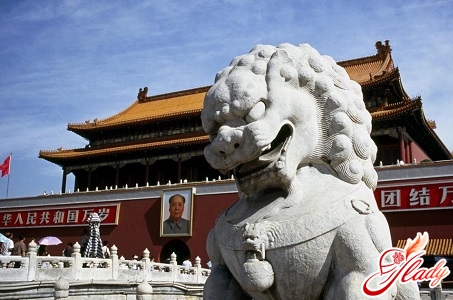
The Legacy of Ancient China
Another great attraction of Beijingis the Forbidden City - the largest palace complex in the world. Built in the 15th century, it served as the ceremonial and political center of the empire for 5 centuries: it was the residence of 24 emperors of the Ming and Qin dynasties. The Chinese have 2 names for the palace: Zijingcheng and Gugong. Which translates as "purple forbidden city" and "palace of former rulers," respectively. There are 980 buildings on the territory of the complex. Its walls form a rectangle surrounded by a moat on all sides. You can get inside through 4 entrances located on each of the cardinal directions. Bridges are thrown across the moat opposite the gate. The palace is divided into internal and external parts. The inner courtyard was used by the emperor and his entourage as a home, and the outer one for receptions and ceremonies. From the southern to the northern entrance stretch the main square with an "inner river with golden water", 6 palaces and an imperial garden. In the south of Beijing there is another landmark built in ancient China. This is the Heavenly Temple. It is a complex of buildings surrounded by a double wall. Initially, everything in it was planned very carefully, and each element of the buildings served specific purposes. For example, the temple itself is round on one side and square on the other. This was done to indicate the forces of heaven and earth. The altar consists of 9 marble slabs. The number 9 is sacred to the Chinese, it brings good luck and is a symbol of the unity of the forces of heaven and earth. The acoustic effects in some buildings are of interest. For example, the quiet words of prayer that were pronounced by emperors on a special platform of the Heavenly Altar were repeatedly amplified. And a triple echo can be heard by the stones located on the way to the Pavilion of the Heavenly Vault. Tourists are not allowed to enter all the rooms, but the uniqueness of the architecture of those times can be perfectly appreciated by looking only at the facades of the buildings.
Where else is it worth to visit?
Name of the next attraction— Beihai Park, which translates as "northern lake/sea". The park complex includes many galleries, bridges, and elegant gardens. You should definitely visit the Round City observation deck: it offers a beautiful view of the park. There is also a statue of Buddha made of white jade. Opposite is the Jade Island, surrounded by a pond. In summer, the surface of the pond is covered with many pink and white lotuses. The bridge that leads to the island is also decorated with these flowers. The Pavilion of the Five Dragons is also of interest. In the mornings, you can see local residents doing various workouts in the park. Among the attractions open to tourists, the former summer residence of the emperors, Yiheyuan, is famous for its 3-story theater. It is worth visiting Yuanmingyuan Park, where the ruins of the summer palace of the same name are located. It is curious to see the Lama Temple — the abode of Tibetan Buddhist monks, to examine the complex of tombs of 13 emperors - Shisanling. If you want to immerse yourself in the atmosphere of the ancient city, then it is good to walk around the Nanluoguxiang district. Some houses here were built in the 13th century. A significant monument of the Old City are 2 towers - Drum and Bell, which once replaced the locals with their music the chimes of the clock. It is possible to list the monuments of antiquity for a long time. Each of them is interesting and mysterious in its own way. But in addition to historical places in Beijing, there are many interesting places. For example, the Beijing Zoo. It mainly presents wild and rare animals of China. Including the giant panda, which is of greatest interest to visitors. Fans of modern painting will undoubtedly be attracted by the Arts District, where artists' workshops and exhibition halls are concentrated. The Olympic Forest Park was built according to the principles of Feng Shui, and the stadium has become another calling card of modern Beijing. In the capital of China, you can admire the Moscow Kremlin, the Eiffel Tower, and almost a hundred other famous objects. Their miniature copies are presented in the theme Peace Park. A trip to Beijing will definitely please even the most picky tourist. It is a city of secrets and contrasts. Familiar and exotic at the same time, it will certainly leave an indelible impression.




